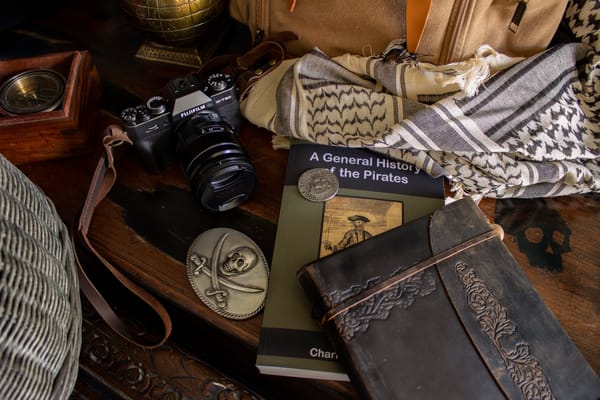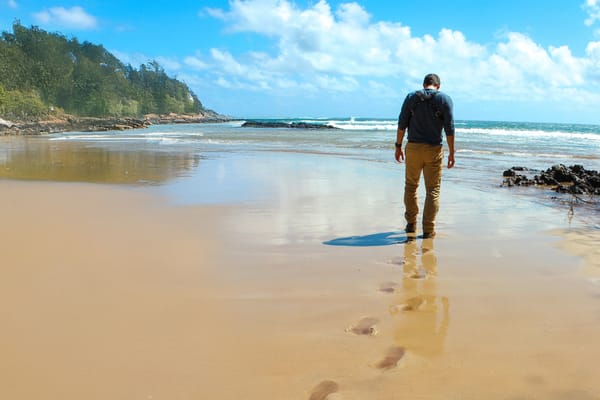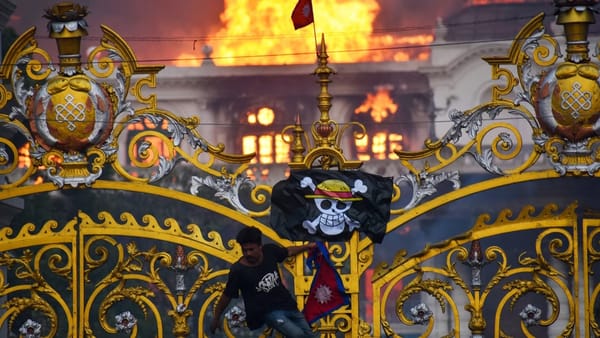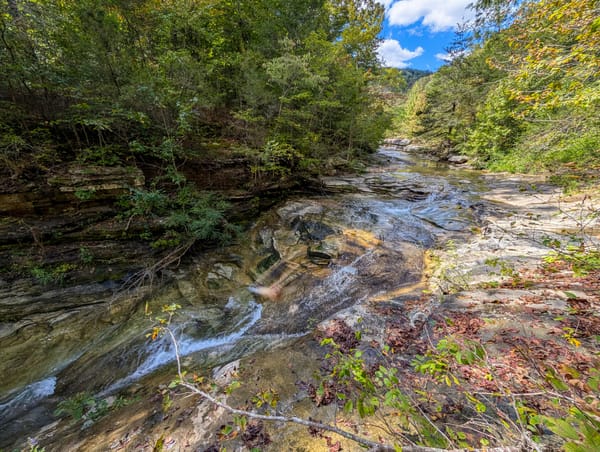Destination: Dubai

It’s been nearly 17 years since I was last in Dubai. As you can imagine, a lot has changed in that time. When I first visited, the skyline was littered with high tower cranes. These many years later, the skyline is dominated by the finished products of what those cranes represented: A new direction. When I was first invited to this small Middle Eastern country, it was for the filming of a travel show called “Living the Life.” During that shoot, it was explained to me that the Sheiks had realized their days of high-end living were coming to an end. Their enormous wealth was linked to the oil beneath their sands, and in time, that oil would run out. If the monarchs of the seven united Emirates wanted to ensure a rich life for future generations, the time to act was now.
They realized that Dubai needed a new source of prosperity. Their solution was to build a luxurious destination city and offer tax incentives to attract the world’s wealthiest businesses and individuals to the area. Seventeen years later, I am able to witness the success of that plan, and it appears I am not the only one. Saudi Arabia’s Crown Prince Mohammed bin Salman has greenlit his plans for NEOM, an even more ambitious and perhaps unachievable city of the future.
Although the view in Dubai has changed significantly over the past years, I can honestly say that my impressions remain the same. Dubai at first sparkles with the allure of luxury. However, it doesn’t take long before it feels like all glitz and not much substance. The city is an impressive location, no question about it, but the entire place does feel a bit fake. As a fan of history and culture, I love a bit of patina, a place or object with a story to tell. Dubai is just too new and too manufactured to have any real sense of depth or sincerity. Luxury can feel hollow without a sense of history. This feeling is amplified by the various design choices. The end result is that you feel like you're in a theme park, Las Vegas, or an open-air mall, rather than an actual city. The mall is a fitting analogy, given the overwhelming amount of shopping taking place. It seems that when you gather some of the world’s richest people together in one location, keeping up with the Joneses hits never-before-seen levels of indulgence.
I had seen so many Lamborghinis that after two weeks, they had lost all of their appeal. A walk around the Dubai Marina is filled with Russian residents publicly demonstrating their worth through the display of luxury brands. The desired effect for the onlooker is intended to be envy, although the entire dog-and-pony show felt somewhat comedic to me. From my 5-star hotel’s infinity pool, I could look down over the marina below and watch the super yachts parading through the harbour, like a billionaire’s version of cruising the strip.
My favorite photograph from my visit is of a lone wooden boat in the marina, surrounded by futuristic skyscrapers. I look at that picture and imagine the crew of that wooden vessel heading out of the harbour to a quieter past, a journey into a lost Bedouin culture. I picture it navigating Arabian desert-lined waterways, and I can’t help but think that would be the better trip.
I will say this: I have heard from many people how Dubai employs farmers and sets them to work as electricians or builders, and how the entire city has been built with very little oversight or quality control. Well, if that is the case, these farmers should be commended, given how well everything seems to be working. These skyscrapers are built on foundations of sand, and yet nothing falls over. The electricity works when you flick the switch, water comes out when you turn the faucet, which is far more than I can say for the “luxury” destination of Antigua, where I have recently spent a fair bit of time. Dubai also gives the sense that you are surrounded by abundance, that anything can happen, and the world is full of possibility. That comes in stark contrast to the Canada I departed from, which is a country that is very much in decline. In Dubai, you ask yourself what else can I strive for? In Canada, the same person would be forced to ask, how much less can I survive on? In terms of food and accommodation, Dubai offers both reasonable options and, of course, sky's-the-limit priced luxury. So now that you have a lens through which to view this city in the sands, let’s look at some of the main areas in closer detail.
JBR, or Jumeirah Beach Residence, is a long strip of beach towards the western side of Dubai. It is lined with beachfront resorts, with its most notable visible landmark being Ain Dubai, the world’s largest Ferris wheel. Much of the strip has a pedestrian-only, shop-lined section that has a sort of Universal Studios CityWalk vibe to it. Further inland, you will come to a street lined with several restaurants and shops offering relatively affordable souvenirs. These restaurants range from well-known fast-food brands to upscale dining establishments. The south side of the street features many grand staircases, lifted straight out of Rodeo Drive, though each has a uniquely painted mural that differentiates it. The staircases lead to elevated sections, which mostly hold themed attractions for tourists. If you long for the Polynesian Islands as much as I do and are in the area, I recommend stopping by Trader Vic’s, located inside the Hilton Dubai Jumeirah. They have several island-themed drinks served up in whimsical glasses, but take note that alcohol is costly no matter where you go in Dubai.
The Palm Jumeirah is our next stop when heading slightly to the east. From the air, this structure is instantly recognizable. The man-made environment is composed of sand sculpted into the shape of a palm frond, ensuring every homeowner has beachfront property. During my first visit, I was privileged enough to take a boat tour of “The World” development, which was similar in nature; however, there, the sand was sculpted into islands in the shape of the world map when viewed from above. That project seems to have hit a standstill, but the Palm is alive and well. Most people will likely come to stay at one of the Palm’s many resorts, or to swim at the Palm West Beach. West Beach is a slightly more upscale version of the JBR environment discussed earlier. The center spine of the Palm is home to a very long walking or running track. With many gardens, trees, and children’s play areas, the track near Al Ittihad Park is a pleasant place for locals to spend some time. Like anywhere in Dubai, there is also a mall in the immediate vicinity. The crown jewels set at the very top of the Palm layout are the sister resorts of Atlantis the Palm and Atlantis the Royal. However, it is the Aquaventure World Waterpark, located between the two, that draws the most tourists. You can access all these locations using the Palm’s monorail system, another hint of theme park inspiration.
I made a point of returning to the Burj Al Arab, whose sail‑shaped silhouette defines Dubai’s coastline. That is where I stayed during my first visit to Dubai. The Burj is the flagship hotel, situated between the Jumeirah Beach Hotel to the east and the Madinat Jumeirah to the west. At the entrance to the Burj, you will find Wild Wadi Waterpark. If you're staying at the Burj, entry to the park is complimentary. I have spent time in all three hotels and can honestly say that, for a fraction of the cost, I prefer Madinet Jumeirah to the Burj Al Arab. The explorer in me prefers the theming, which is a blend of traditional Arabian architecture, such as wind towers, water canals, and palatial decor inside, albeit in a theme park version. I recall it being more of a Pueblo color in my mind, but on my return, it had more of a Cinderella dusty rose paint scheme, which unfortunately heightened its artificiality. Even if you aren’t staying at the hotel, you are welcome to visit Souk Madinat on its lower level, which pays homage to old-fashioned Arabian marketplaces. There are several antiquities shops, some of which sell genuine historical artifacts; however, be cautious, as I have spotted many of them attempting to pass off fakes as authentic, so buyer beware.
Dubai’s downtown wouldn't be complete without a stop by the Burj Khalifa and the Dubai Mall, being the world’s tallest building and largest mall, respectively. There is a Bellagio-style fountain show that starts nightly at 6 pm in the massive fountains at the foot of the Burj Khalifa. The mall itself features a multi-story waterfall, a cinema, an ice rink, and a massive indoor aquarium, among many other attractions. It is very easy to get turned around in this mall. However, digital maps are strategically placed throughout the layout to help keep you on track. Personally, my favourite part of the mall was Chinatown, a uniquely decorated section, complete with various Chinese shops, restaurants, neon signs, and of course, hanging lanterns.
The mall is easily accessible via Dubai’s state-of-the-art metro rail system. In fact, even their high-traffic bus shelters are enclosed and air-conditioned. For the best vantage point of the Burj Khalifa, head to the far southern end of Burj Park and bring a wide-angle lens, or use your panoramic setting to stitch together a photo that captures the entire structure.
My favourite part of Dubai was getting out into the deserts and away from the shops. That statement is true of both of my visits. You can spend thousands and stay at a glamping destination or a resort like Bab Al Shams, or you can make it an affordable day trip from the city. In the desert, you can experience falcons firsthand, ride camels, ATVs, or Land Cruisers over red dunes. Come evening, you will likely end up at one of many desert encampments with belly dancers, traditional food, and music. The quality of all three depends on the price you pay, but there is an option available for every budget.
As I mentioned, Dubai does feel like a very artificial environment. Its exteriors lean heavily into theme park design, and many of the interiors share a bit of Las Vegas’ overindulgence, resulting in a borderline tacky aesthetic. Perhaps the saying is true: money can’t buy taste. However, the Sheiks' decision to draw on their oil-rich coffers to create better opportunities for their grandchildren is highly commendable.
I am genuinely impressed by what Dubai has achieved in such a short amount of time. However, as someone with a love for history and old architecture, the entire place is a little too “Starfleet headquarters” for my liking. Dubai is a reminder that while ambition can reshape horizons, true depth is shaped by time and countless stories. A reminder that real discovery often waits where the map ends. So if you want a little dirt, adventure, and Bedouin mystique, then head for the desert. For a more reasonable price, there is a dune, a tent, and an oasis waiting for you. The falcon costs extra.





